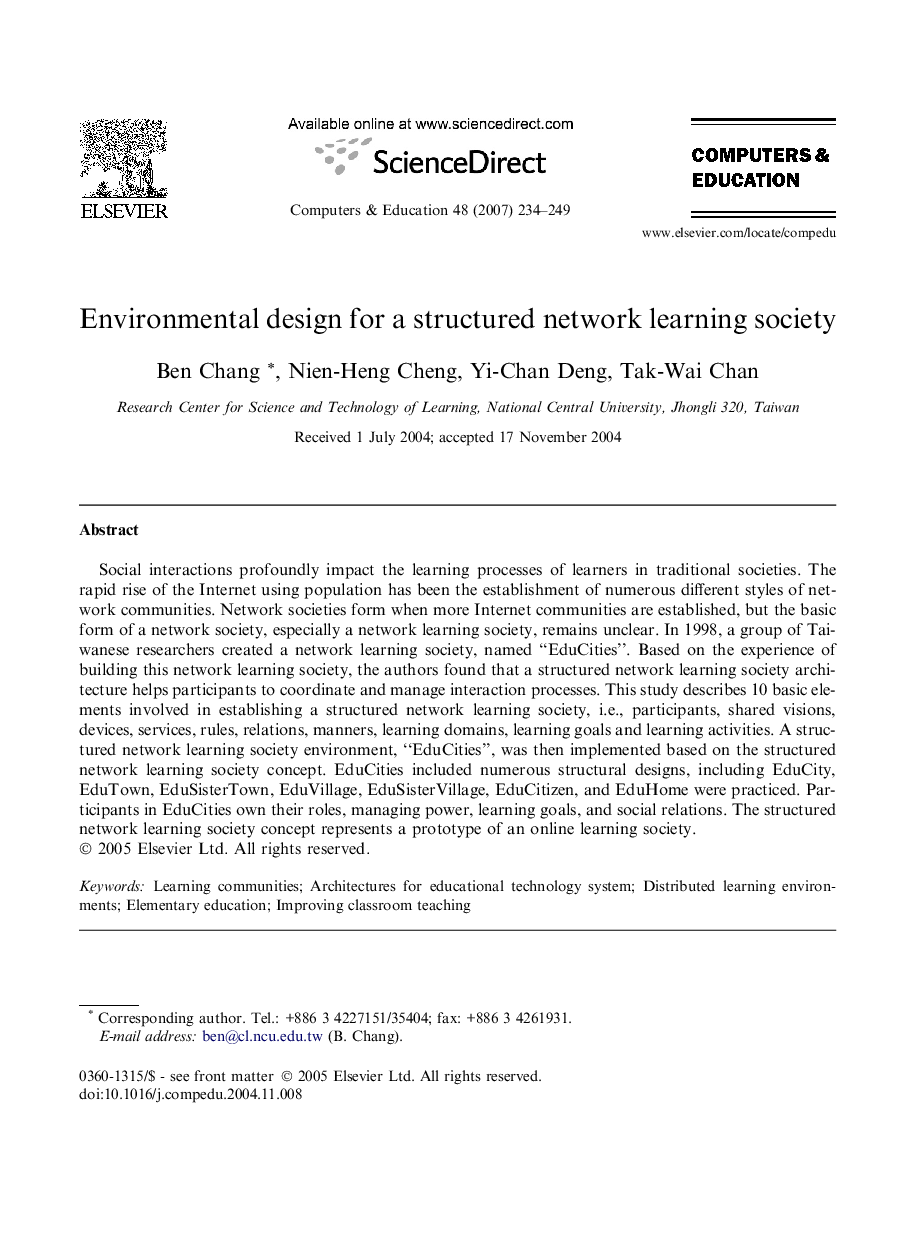| Article ID | Journal | Published Year | Pages | File Type |
|---|---|---|---|---|
| 349988 | Computers & Education | 2007 | 16 Pages |
Social interactions profoundly impact the learning processes of learners in traditional societies. The rapid rise of the Internet using population has been the establishment of numerous different styles of network communities. Network societies form when more Internet communities are established, but the basic form of a network society, especially a network learning society, remains unclear. In 1998, a group of Taiwanese researchers created a network learning society, named “EduCities”. Based on the experience of building this network learning society, the authors found that a structured network learning society architecture helps participants to coordinate and manage interaction processes. This study describes 10 basic elements involved in establishing a structured network learning society, i.e., participants, shared visions, devices, services, rules, relations, manners, learning domains, learning goals and learning activities. A structured network learning society environment, “EduCities”, was then implemented based on the structured network learning society concept. EduCities included numerous structural designs, including EduCity, EduTown, EduSisterTown, EduVillage, EduSisterVillage, EduCitizen, and EduHome were practiced. Participants in EduCities own their roles, managing power, learning goals, and social relations. The structured network learning society concept represents a prototype of an online learning society.
